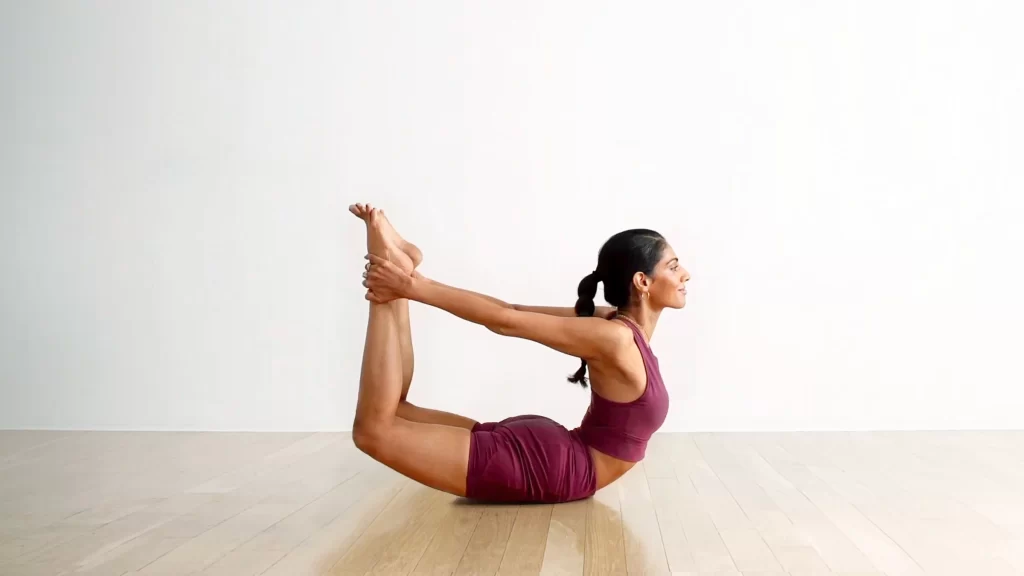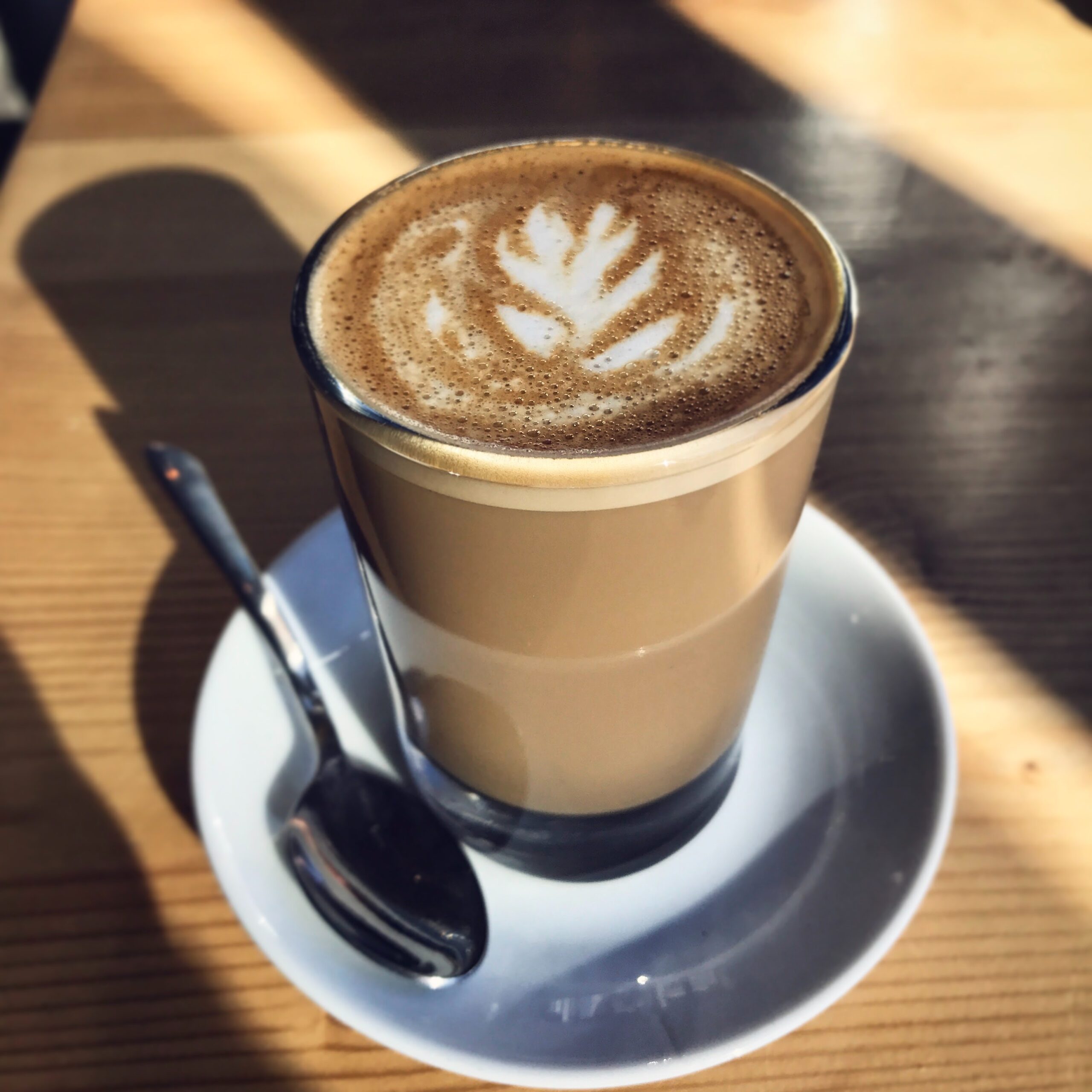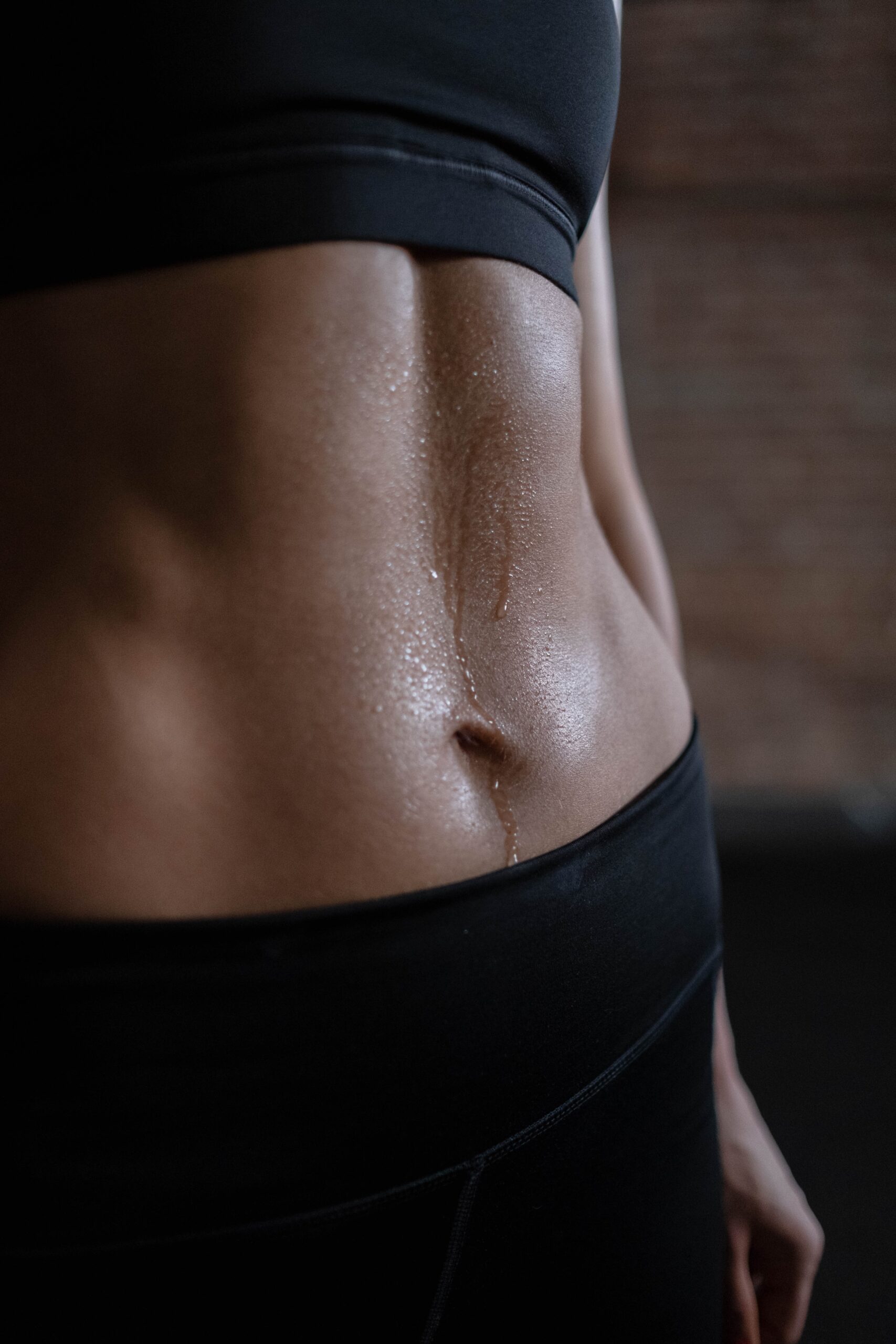Please note that doing yoga poses alone doesn’t guarantee that your abs will look great as it also requires a healthy and balanced diet, as well as regular practice and consistency. And it’s important to remember to listen to your body and not push yourself too hard. It’s also recommended to consult with a certified yoga teacher to ensure proper alignment and technique in these poses.
Plank Pose
The Plank Pose (Phalakasana) is a yoga pose that strengthens the core, shoulders, and arms. To do the Plank Pose, start in a push-up position with the hands placed directly under the shoulders, fingers spread wide, and pointing forward. Engage the abs, and keep the body in a straight line from the crown of the head to the heels. Hold for several breaths, then release.
It’s important to keep the shoulders away from the ears, and the neck and spine in a neutral position. Avoid letting the hips sag or lift too high. It’s also recommended to start with shorter holds and gradually increase as your strength improves. You can also modify the pose by coming down to your forearms instead of your hands.
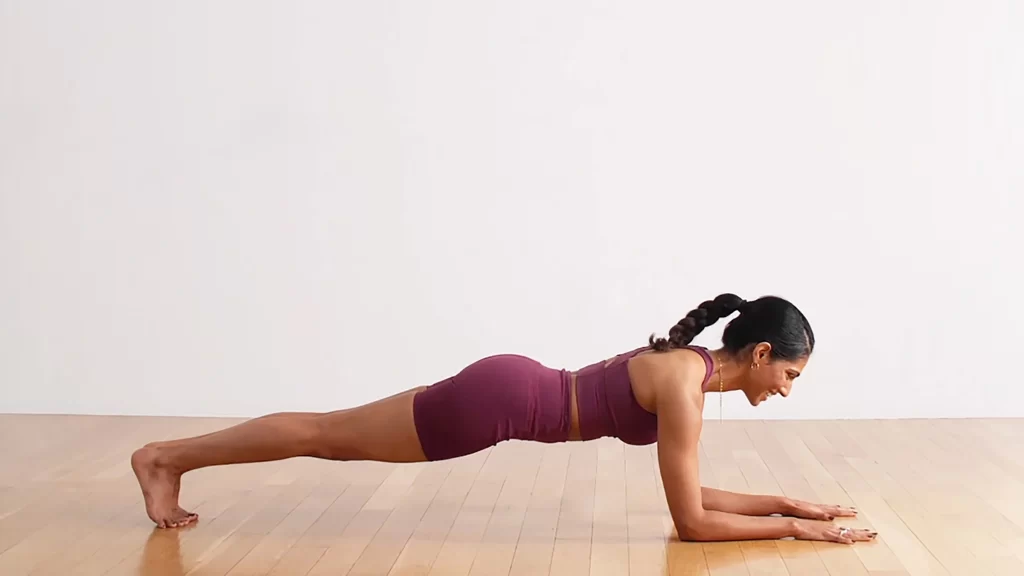
Boat Pose
The Boat Pose (Navasana) is a yoga pose that targets the abs and improves balance. To do the Boat Pose, start seated on the mat with your knees bent and feet on the floor. Lean back slightly and lift the feet off the ground, balancing on the sit bones. Keep the shins parallel to the ground, and extend the arms parallel to the legs. Keep the gaze forward and hold the pose for several breaths.
It’s important to keep the spine long and engage the abdominal muscles. Avoid rounding the back or slouching forward. To increase the challenge, you can straighten the legs and extend the arms forward, keeping the balance. As you progress, you can try to lift the legs higher and hold the pose longer.
It’s also important to listen to your body and not push yourself too hard, if you feel strain in your lower back, release the pose.
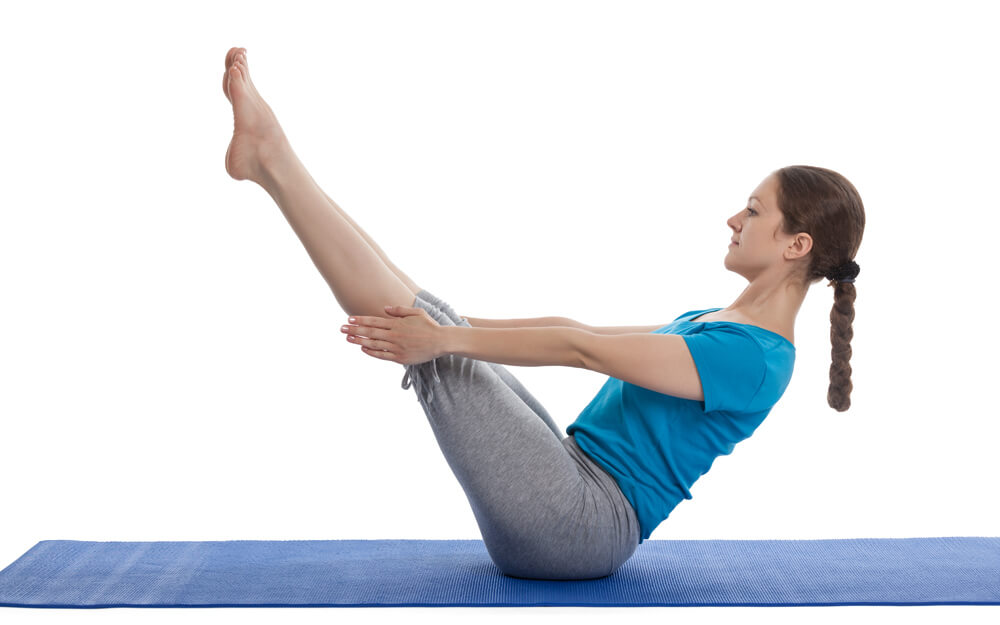
Cobra Pose
The Cobra Pose (Bhujangasana) is a yoga pose that strengthens the abs, back, and shoulders. To do the Cobra Pose, start by lying on your stomach with your hands placed under the shoulders and your elbows close to the body. As you inhale, press down through the hands and lift the chest off the floor, keeping the elbows close to the body. Keep the shoulders relaxed, and the gaze forward. Hold the pose for several breaths, then release.
It’s important to keep the elbows close to the body and engage the back muscles rather than the arms. Avoid pushing too hard into the hands and straining the lower back. To modify the pose, you can place the hands under the shoulders, rather than directly under the shoulders.
It’s also important to listen to your body and not push yourself too hard, if you have any injuries or pain in your lower back, it’s best to avoid this pose or to consult with a certified yoga teacher.
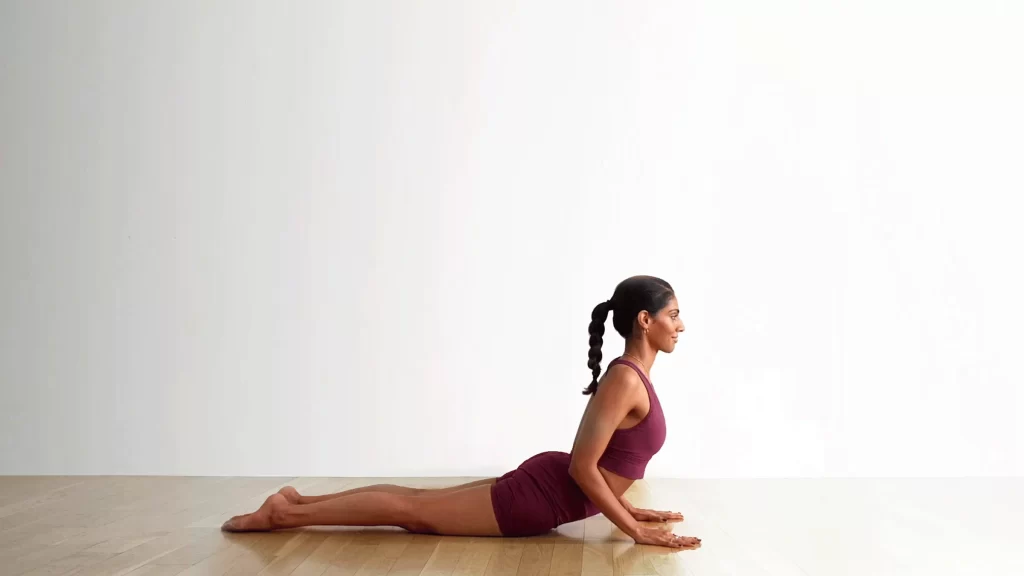
Locust Pose
The Locust Pose (Salabhasana) is a yoga pose that strengthens the abs, back, and legs. To do the Locust Pose, start by lying on your stomach with your arms alongside your body, and your forehead resting on the floor. As you inhale, lift the head, upper body, arms, and legs off the floor. Keep the arms alongside the body, and reach through the fingers. Hold the pose for several breaths, then release.
It’s important to keep the shoulders relaxed and engage the back muscles, rather than the arms. Avoid arching the lower back or straining the neck. To modify the pose, you can keep the arms alongside the body and lift only the head and legs, or keep the hands under the thighs, rather than reaching through the fingers.
It’s also important to listen to your body and not push yourself too hard, if you have any injuries or pain in your lower back, it’s best to avoid this pose or to consult with a certified yoga teacher.
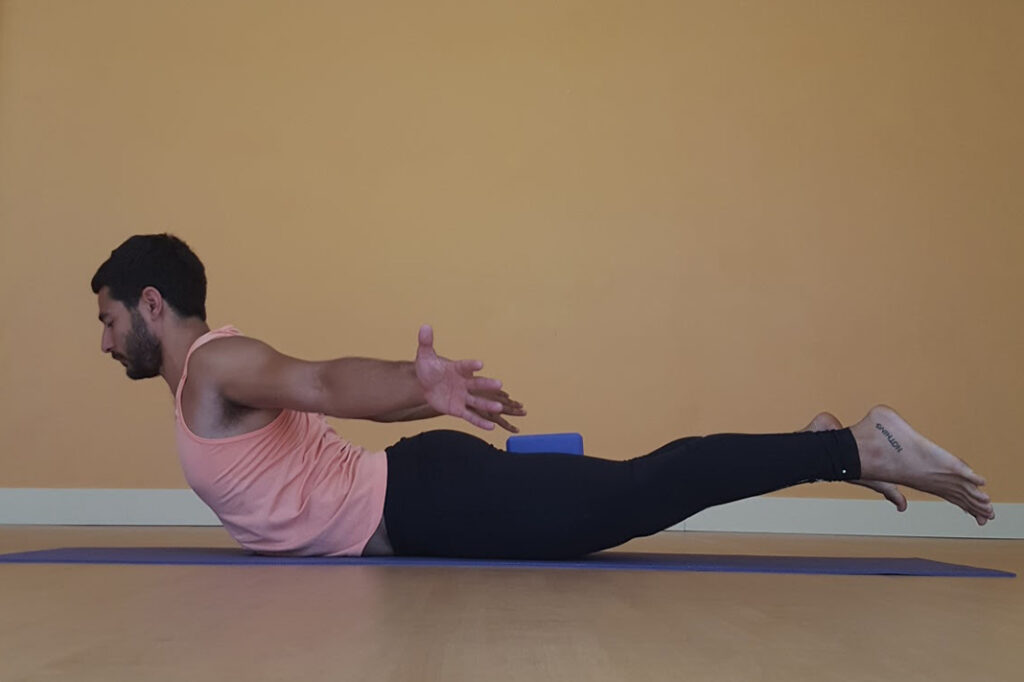
Bow Pose
The Bow Pose (Dhanurasana) is a yoga pose that strengthens the abs, back, and arms. To do the Bow Pose, start by lying on your stomach with your arms alongside your body, and your forehead resting on the floor. Bend your knees, and reach back with your hands to hold onto your ankles. As you inhale, lift the head, upper body, and legs off the floor, pulling your heels towards your buttocks. Keep the arms and legs parallel to the floor. Hold the pose for several breaths, then release.
It’s important to keep the shoulders relaxed and engage the back muscles, rather than the arms. Avoid arching the lower back or straining the neck. To modify the pose, you can keep the hands under the thighs, rather than holding onto the ankles, or use a strap around the ankles if you can’t reach them.
It’s also important to listen to your body and not push yourself too hard, if you have any injuries or pain in your lower back, it’s best to avoid this pose or to consult with a certified yoga teacher.
